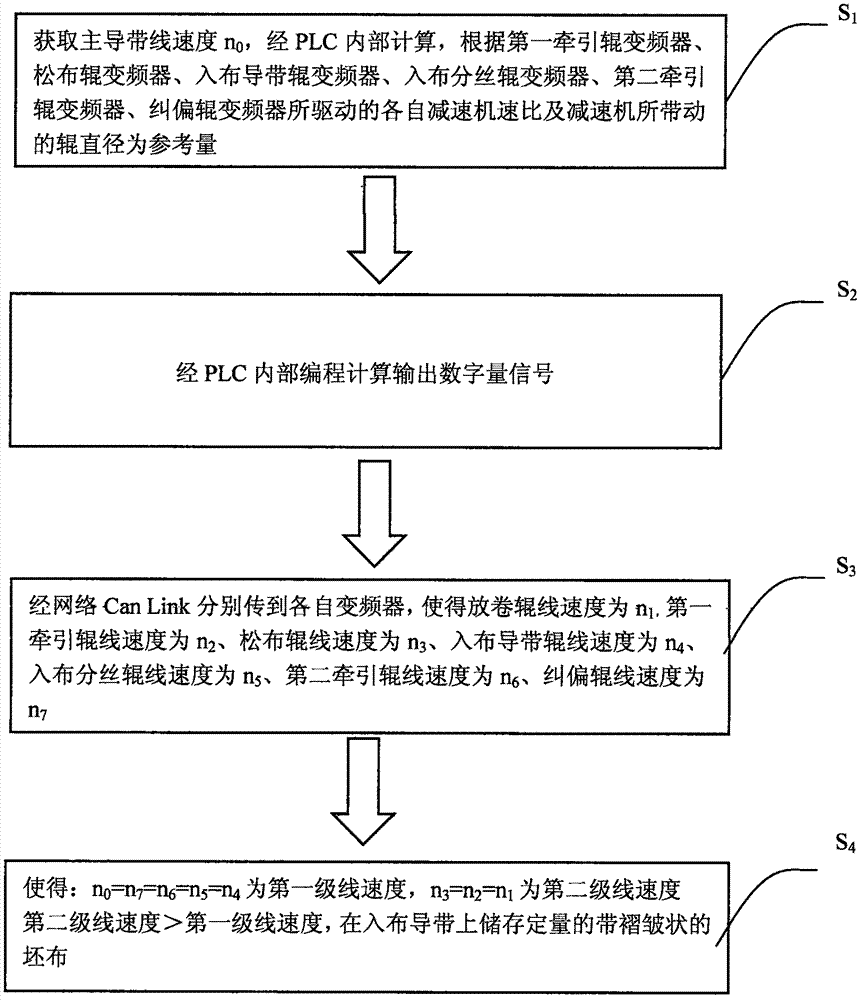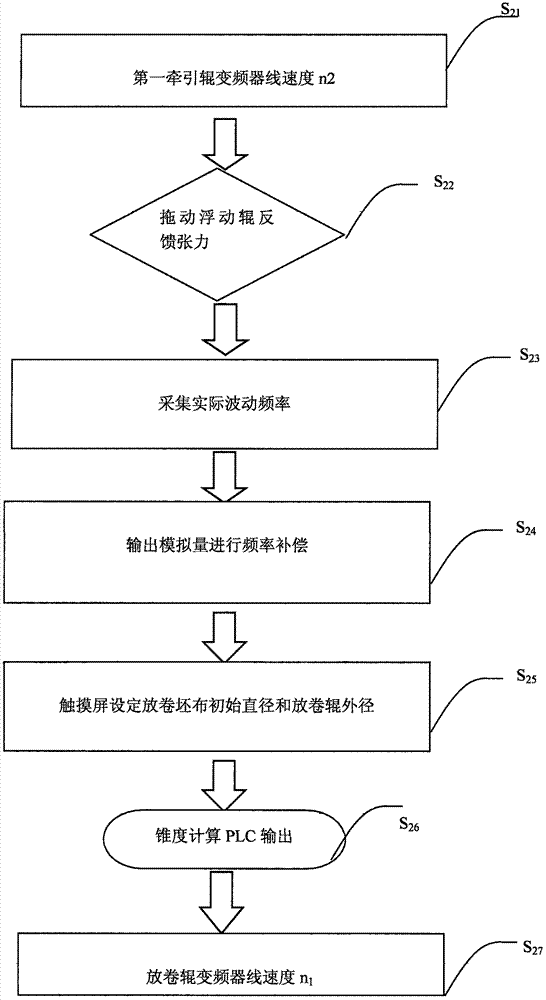Cloth feeding method for continuous type high-speed textile digital printing machine
A digital printing machine and cloth feeding technology, applied in printing, printing devices, etc., to improve printing quality and reduce defective rate
- Summary
- Abstract
- Description
- Claims
- Application Information
AI Technical Summary
Problems solved by technology
Method used
Image
Examples
Embodiment Construction
[0015] The following will clearly and completely describe the technical solutions in the embodiments of the present invention in conjunction with the accompanying drawings in the embodiments of the present invention. Obviously, the described implementation is only a part of the embodiments of the present invention, and those of ordinary skill in the art do not All other embodiments obtained under the premise of creative work all belong to the protection scope of the present invention.
[0016] The invention provides a continuous high-speed textile digital printing machine cloth feeding method, which is used for fast and stable cloth feeding of the high-speed digital printing machine, figure 1 The flow chart of the method for controlling the line speed of multiple rollers of the cloth feed frame provided by the embodiment of the invention, the method may include:
[0017] S1: Obtain the linear speed n of the leading tape roll 0 , according to the internal calculation of the PL...
PUM
 Login to View More
Login to View More Abstract
Description
Claims
Application Information
 Login to View More
Login to View More - R&D
- Intellectual Property
- Life Sciences
- Materials
- Tech Scout
- Unparalleled Data Quality
- Higher Quality Content
- 60% Fewer Hallucinations
Browse by: Latest US Patents, China's latest patents, Technical Efficacy Thesaurus, Application Domain, Technology Topic, Popular Technical Reports.
© 2025 PatSnap. All rights reserved.Legal|Privacy policy|Modern Slavery Act Transparency Statement|Sitemap|About US| Contact US: help@patsnap.com


